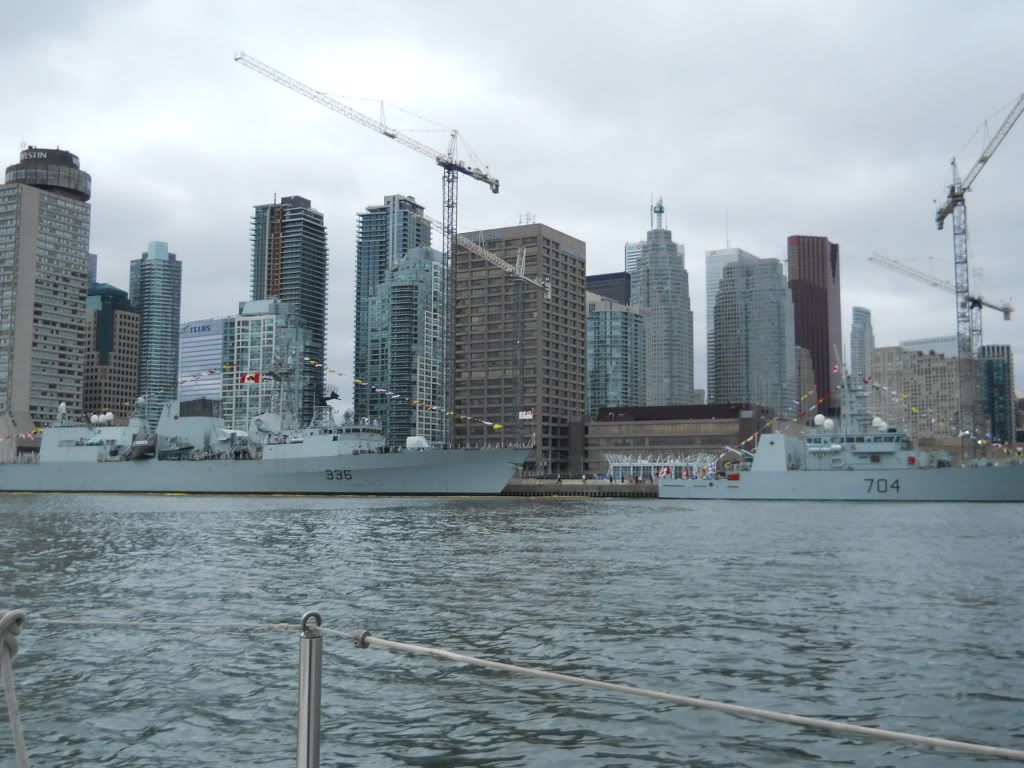Living in Canada and writing in English on the internet means a lot of contact with Americans, who, when they think of Canada at all, do not see us as a particularly belligerent bunch, as a sort of self-deprecating politeness seems to be our collective sociological trait, where we can be distinguished from Minnesotans or Vermonters at all (save for les Quebecoises, I suppose, whom Americans sometimes think are found everywhere in Canada in large numbers).
And yet like many other Commonwealth countries like Australian, New Zealand and even the Gurkhas of Nepal, we have been and continue to be quite a feisty bunch. The current debate about fighting in hockey in Canada would be unlikely to happen elsewhere, as apart from MMA and boxing, there are very few sports in which out-and-out brawling is considered part of the game. Even rugby is arguably less violent.
Which brings us to Canada's often-derided armed forces. We possess a vast country and a diffuse population, which, while wealthy on the scale of nations, is not really numerous or threatened enough to justify the sort of army, navy and air force that would impress a middle-rank dictator. Indeed, more than one American has alleged that Canada gets a "free ride" in terms of our own military defence, although one might say "a free ride from the enemies of America, perhaps", but that wouldn't be true, either.
The truth is that our compact military has been at it for years at the a large human and financial cost since the Second World War, during which Canada fielded disproportionately large navies and armies. We once had an aircraft carrier, for instance, but it has since made more sense to have frigates. Recently, as a "last day of summer holidays treat", we saw one of our own, HMCS Montreal. (The other treat was a honking fast sail in Valiente.)

Montreal and two smaller minesweepers are currently patrolling the Great Lakes...for what is not precisely clear, but I'm sure the crews appreciate not being in their usual Atlantic patrol areas in September.
Our son, Mr. Cabin Boy, appreciated the opportunity to see large red buttons reading "ARMED" and "FIRE" and to field-test the rigidity of the deck gun. For a non-taxpayer, he has some firmly held ideas on what constitutes value.
Dad, meanwhile, appreciated those aspects of a 480 foot frigate that have application in his own steel hulk of approximately 1/12 the length...and it's more than one might think. Their liferafts look bigger, but are still recognizably liferafts.
The ground tackle, while impressively sized, was also not radically different in design, although the forces involved in holding something this massive and lofty exceed my imagination.
The "devil's claw", used to secure the chain and relieve strain on the windlass (I guess "capstan" is more appropriate).
It's adjusted with this hulking turnbuckle thingie.
Which is in turn "adjusted" with a Navy-issue sledgehammer.
And the chain goes out via this suspiciously well-polished hawse pipe. Modern warships seem to favour a centerline chain deployment and anchor stowage.
Possibly the only compass I've seen that's nicer than our Ritchie Globemaster, but mine still has the hilariously named "compensator balls". The balls on this one must reside below decks, one assumes.
And clearly, one would prefer to "operate" this part of the ship. Alas, no.
As for navigation, I was gratified to see that they are no better equipped than ourselves in the paper chart department:
...although their RADAR is a bit more elaborate.
...and so is their plotter...
My favourite bit was spotted as we were leaving...HMCS Montreal has an interesting approach to deploying fenders:
No doubt effective!
While not personally particularly militaristic, I come from a family in which active military service has played a role, and I respect the work of our armed forces who are frequently given tasks at home and overseas for which our federal government seem unwilling to finance. The sailors aboard were courteous and well-informed, and seemed to welcome the opportunity to mingle with the public that pays for the ships. Given a world in which future conflict is likely to persist, I hope "big city visits" like that of the Montreal and her sister ships inculcates a willingness to maintain an effective armed force for Canada.




















